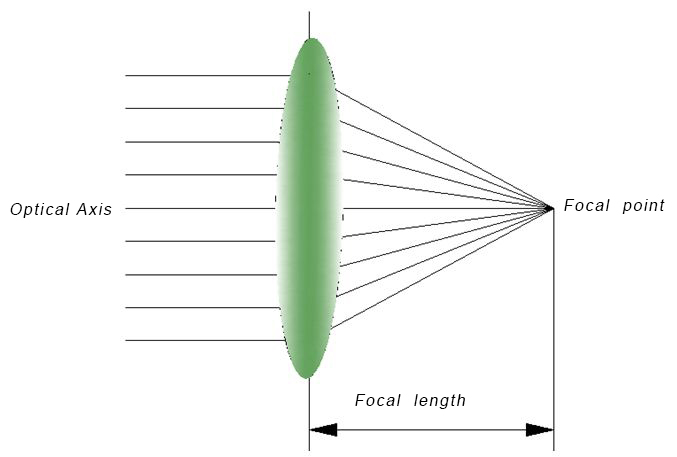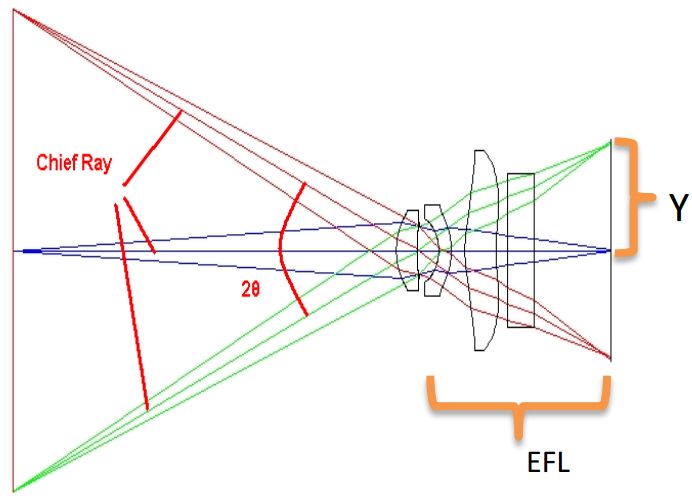In a machine vision system, the lens acts as the eyes of the machine. Its primary function is to focus the image of the target object onto the photosensitive device of the image sensor (camera). All image information processed by the data system must be obtained through the lens, and the quality of the lens directly affects the overall performance of the vision system.
The focal length in an optical system is used to measure the system’s ability to converge or diverge light rays.

How can we understand the relationship between focal length and field of view?
For the same image sensor, the longer the focal length of the lens, the smaller the field of view, and vice versa (excluding the effects of barrel distortion).
You can get an intuitive sense of this relationship from the following set of images.

The spatial angle range that a lens can see on the photosensitive element, that is, the angle subtended by the entrance pupil center to the object or the exit pupil center to the image in an optical system.
The relationship between the field of view (FOV) angle and the effective focal length (EFL):

If Y is the half-diagonal length of the sensor, and assuming no optical system distortion, the diagonal field of view angle (2θ) is given by 2θ = 2 * arctan(Y / EFL), as shown in the diagram:
a. With the same lens focal length, the larger the sensor size, the larger the field of view angle. b. With the same sensor size, the shorter the lens focal length, the larger the field of view angle. c. With the same lens focal length and sensor size, the greater the barrel (negative) distortion, the larger the field of view angle.
Bena Optics specializes in providing optical lenses for industrial applications, including spherical lenses, aspherical lenses, as well as assembly and calibration services. They are a leading provider of one-stop solutions for advanced optical needs.